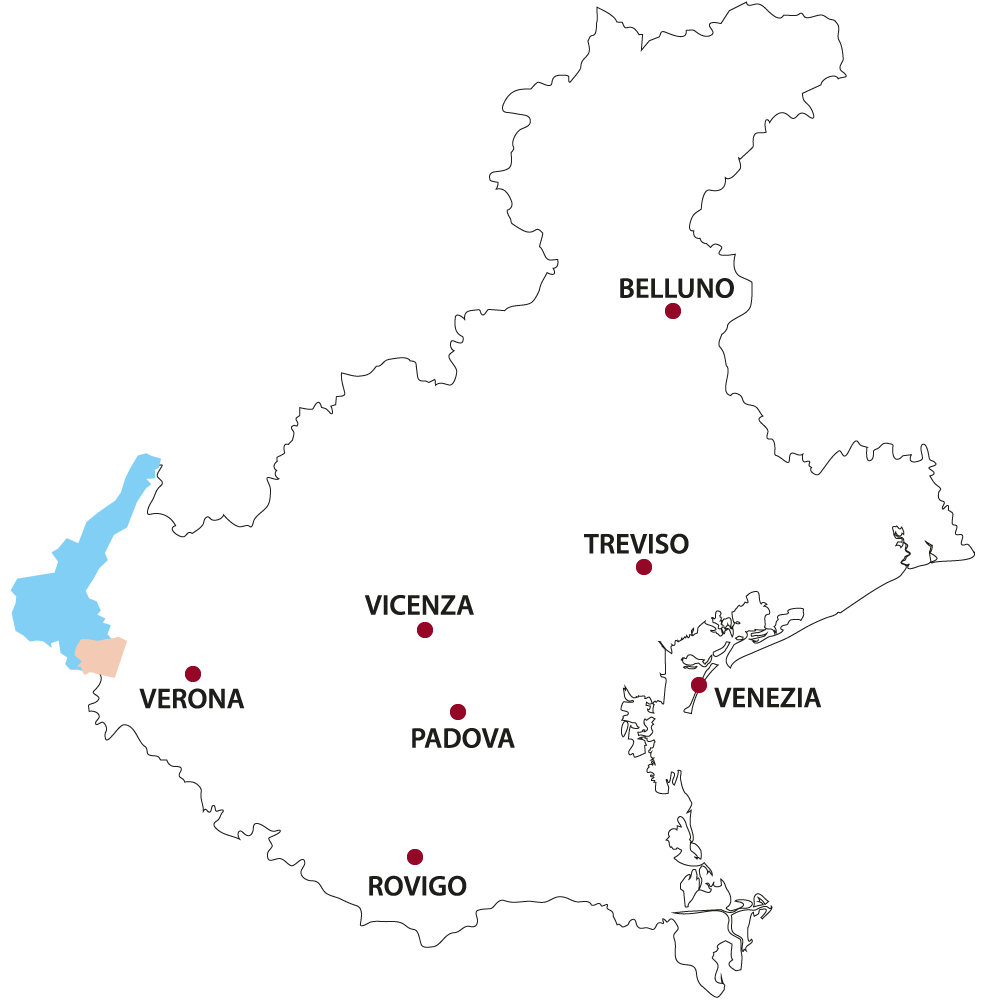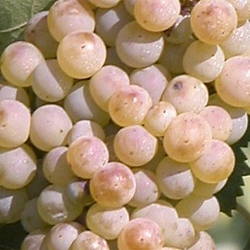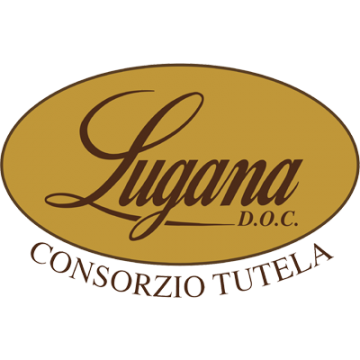

Zona di produzione
Lugana is a small, marvellous, and precious territory adjacent to the southern shore of Lake Garda that from Peschiera, in the province of Verona, continues into the province of Brescia, crossing Sirmione and Desenzano, then proceeds inland, skirting the morainic hills between Pozzolengo and Lonato. A basin of Lombardy-Veneto that unfolds in a succession of vineyards and wine cellars, hotels and residences. In this charming setting, a famous tourist destination throughout the world with the Alps forming a majestic backdrop to the azure waters of Lake Garda, the white wine Lugana D.O.C. is produced. The name is linked to the ancient Selva Lucana, a marshy forest that once covered the whole of the territory, populated by wild boar, white tail deer and fallow deer. The predisposition of the ecosystem and a surprisingly mild climate have always driven human intervention in the territory towards the planting of vineyards as a predominant choice. When tasting a Lugana wine, one immediately recognises the wonders of the territory, where the soil is influenced by its remote morainic origins. It consists of a varied combination of predominantly limestone clay, rich in mineral salts. It’s worth mentioning as a historical note Gaius Valerio Catullo who lived in the territory of Lugana for a long time, and extolled in his songs this land and its prestigious white wine. Lombard and Ostrogoth kings were great admirers of Lugana wine, so much so that King Teodato, who lived around 500 AD, described it as a regal wine. So too, Lugana was always the favourite wine in the banquets of the Consulta, and at the nearby Court of Scaligera. Today the Lugana in all its varieties is a wine sought after for the harmony of its aromas and tastes, its great pungency, its structure, and the purity that make it unforgettable. It is no coincidence that Lugana was the first D.O.C. registered in Lombardy, and one of the earliest in Italy.
Caratteristiche e tipologie vino
The Lugana microclimate, which benefits from the temperate breezes of Lake Garda, is mild and seldom subject to sharp changes in temperature between night and day. It truly is the perfect “climatic cradle” for nurturing and enhancing the peculiar characteristics of grape cultivars such as Turbiana. Although production standards foresee the presence of complementary varieties of nonaromatic white grape at a ratio of 10%, today winemakers in the area tend to make Lugana only and exclusively with Turbiana grapes. This purist approach is possible thanks to a vine that has proved to derive beyond belief resources from this terroir. The current production standards include five different types of Lugana wine: the “basic” version, Superior, Reserve, Vendemmia Tardiva (late harvest) and Spumante. The Lugana “basic” is the productive engine of the entire denomination, its main line is the qualitative pointer of the area: its productive flywheel covers almost 90% of the D.O.C. The Lugana Superior was officially introduced in 1998, and in order to bear this label the wine must age and mature for at least one year after the grapes are harvested. Its profile is more variegated and complex. The Lugana Riserva, introduced with the last revision standards of production in 2011, is the natural evolution of the Superior: it must age or mature for at least 24 months, 6 of which in bottles. The Lugana Vendemmia Tardiva (late harvest) is a different, more “experimental” type of Lugana that lacks the sweet viscosity of a traditional passito. This wine is in fact made with “overripened” grapes that have been left on the vine until between late October and early November, instead of being harvested and then stored till suitably dry. The rich more concentrated flavour of these grapes confer a “late” profile to this Lugana, softer and thicker but not excessively sweet, where sugar content is balanced by the acidity such as in the Alsatian Vendange Tardive or German Spätlese wines. The Lugana Spumante is produced using both the Charmat and the Classic Method, and exiguity of production numbers aside, represents a consolidated tradition instead. The longevity of these “dry” and “still” versions vary from type to type but also from style to style. The long life of Lugana is nonetheless greater today than ever before as production has become increasingly orientated towards steel vat vinification and “sur lie” (by which the wine remains in its own yeast for longer periods of time to enhance both body and flavour), as well as mixed aging techniques (part in steel, part in wood) for top selections (Superior or Reserve).
Grapes
-

TURBIANA
Lugana wine must be obtained from Turbiana vine grapes. Also white grapes from other vines, with the exclusion of Moscati and Malvasie, can contribute for a maximum of 10% of the total to the production of this wine. As for the main vine, the production regulation refers to “Turbiana” as Trebbiano di Lugana. Lugana has been selected over the centuries by local winemakers and has thus become an essential element for the exploitation of Lake Garda and the whole sector of agri-food and tourism.
White Wines
LUGANA
Colour: giallo paglierino intenso, con possibili riflessi verdognoli, tendente al dorato con l’affinamento;
Bouquet: intenso e ampio, con sentori di spezie fresche, fiori e frutta;
Taste: sapido, secco, di notevole struttura, fresco e persistente, asciutto e vivace;
Alcoholic Strength minimum total volume: 11,50%
Serving Temperature: va servito ad una temperatura di 8-10° in bicchiere di media grandezza a forma di tulipano slanciato, chiuso leggermente verso l’alto per consentire un’armonica concentrazione di profumi.
Accompaniments: si sposa alla perfezione con aperitivi, antipasti, piatti di pesce anche crudo, verdure, formaggi e dolci;
LUGANA SUPERIORE
Colour: giallo paglierino intenso, con possibili riflessi verdognoli, tendente al dorato con l’affinamento;
Bouquet: intenso e ampio, con sentori di spezie fresche, fiori e frutta;
Taste: sapido, secco, di notevole struttura, fresco e persistente, asciutto ed equilibrato;
Alcoholic Strength minimum total volume: 12% vol.;
Serving Temperature: va servito ad una temperatura di 12°-14° in bicchiere di media grandezza a forma di tulipano slanciato, chiuso leggermente verso l’alto per consentire un’armonica concentrazione di profumi.
Accompaniments: ideale come aperitivo, antipasti, ma anche piatti di pesce, in particolare pesce di lago, sformati di verdure, uova, formaggi e dolci;
LUGANA SPUMANTE
Colour: giallo paglierino intenso, con possibili riflessi verdognoli;
Bouquet: intenso e ampio, con sentori di spezie fresche, fiori e frutta;
Taste: sapido, secco, di notevole struttura, fresco e persistente;
Alcoholic Strength minimum total volume: 11,50%
Serving Temperature: va servito ad una temperatura di 6°-7° in bicchiere flute.
Accompaniments: ottimo per aperitivi, piatti delicati e portate a base di uova;
LUGANA VENDEMMIA TARDIVA
Colour: giallo paglierino , tendente al dorato con l’affinamento;
Bouquet: intenso e ampio, con sentori di spezie fresche, miele, note minerali;
Taste: morbido e denso, dolce non stucchevole,, di notevole struttura, equilibrato;
Alcoholic Strength minimum total volume: 13,00%
Serving Temperature: va servito ad una temperatura di 12°-14° in bicchiere di media grandezza a forma di tulipano slanciato, chiuso leggermente verso l’alto per consentire un’armonica concentrazione di profumi.
Accompaniments: ideale con i formaggi freschi come la ricotta e quelli a DOP del territorio Grana Padano, e Monte Veronese.
LUGANA RISERVA
Colour: paglierino con tendenza al giallo dorato con l’affinamento;
Bouquet: delicato e gradevole, con sentori di spezie fresche, note affumicate, pietra focaia e riflessi balsamici;
Taste: sapido, secco, di notevole struttura, fresco e persistente, asciutto ed equilibrato;
Alcoholic Strength minimum total volume: 12% vol.;
Serving Temperature: va servito ad una temperatura di 12°-14° in bicchiere di media grandezza a forma di tulipano slanciato, chiuso leggermente verso l’alto per consentire un’armonica concentrazione di profumi.
Accompaniments: ideale come aperitivo, antipasti, ma anche piatti di pesce, in particolare pesce di lago, sformati di verdure, carni bianche come gallina e coniglio.

